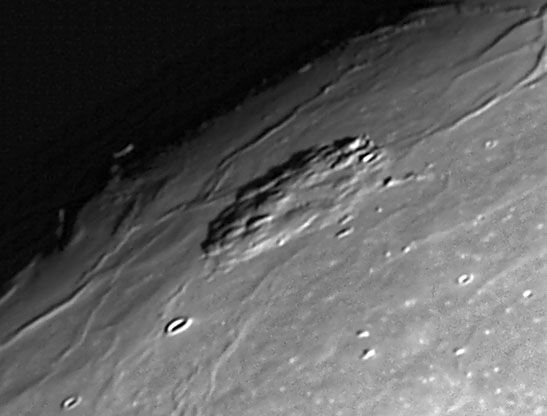Difference between revisions of "December 17, 2004"
| Line 12: | Line 12: | ||
</table> | </table> | ||
<table width="80%" border="0" align="center" cellpadding="8"> | <table width="80%" border="0" align="center" cellpadding="8"> | ||
| − | <tr><td><div align="center" class="main_sm">Image Credit: [mailto:paololazzarotti@astromeccanica.it Paolo Lazzarotti]</p> | + | <tr><td><div align="center" class="main_sm"><p>Image Credit: [mailto:paololazzarotti@astromeccanica.it Paolo Lazzarotti]</p> |
</div></td> | </div></td> | ||
</tr> | </tr> | ||
Revision as of 21:48, 20 January 2015
Roris Rump
Image Credit: Paolo Lazzarotti |
|
Roris Rump Is Rumker a unique feature, or just the largest dome on the Moon? Its large size (70 km) and complex - pimpled - topography suggests that it is at least different in scale from classical domes. The only comparable lunar bump is the same-sized Gardner Megadome. The origin of the Megadome is uncertain, but Rumker has the same spectral signature as the mare to the west, and is undoubtedly volcanic. The individual little rises on Rumker do look like un-cratered domes, which Lena and others estimate to rise 300-400 m above their bases. Although there seems to be no other topo information, Rumker appears to perhaps be twice as high as these little pimples. As with the Aristarchus Plateau it is difficult to estimate how much of Rumker's overall elevation results from eruptions piling up magma around a vent and how much is uplift. Technical Details: Related Links: Tomorrow's LPOD: Ho Hum, Plato Again |
|
Author & Editor: Technical Consultant: Contact Translator: A service of: |
COMMENTS?
Register, and click on the Discussion tab at the top of the page.




